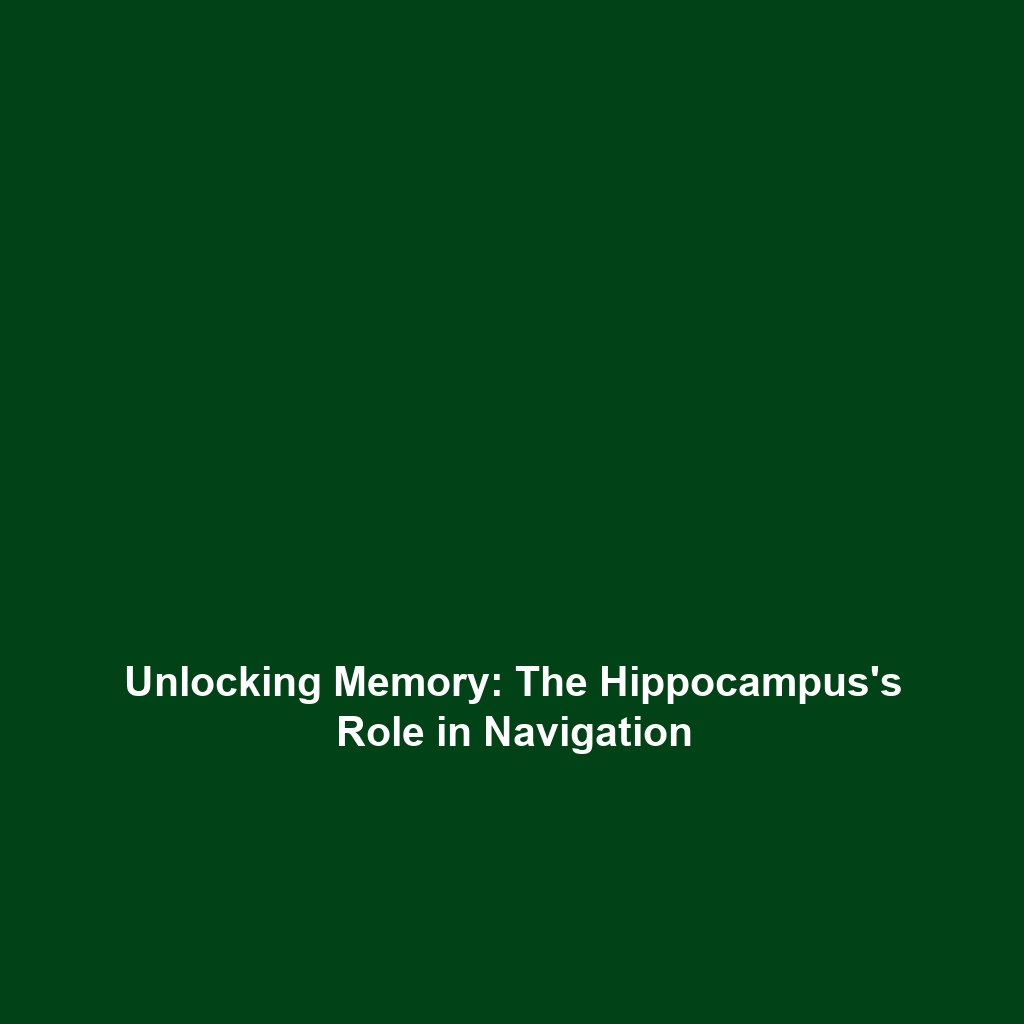The Hippocampus and Memory: Responsible for Forming New Memories and Spatial Navigation
The hippocampus plays a crucial role in the formation of new memories and spatial navigation, significantly impacting how we perceive our surroundings and relate to past experiences. Within the realm of biomechanics, understanding the dynamic processes involved in memory formation highlights how physical movements and brain functions intertwine. This article delves into the complexities of the hippocampus and its essential functions in memory and navigation, offering insights relevant to both neuroscience and biomechanics.
Key Concepts
The Hippocampus Functionality
The hippocampus is a critical structure located in the medial temporal lobe of the brain, responsible for various aspects of memory processing. It is involved in:
- Memory Consolidation: Transferring short-term memories into long-term storage.
- Spatial Navigation: Helping individuals navigate their environment by creating cognitive maps.
- Contextual Memory: Associating experiences with specific contexts, enhancing recall.
Biomechanical Implications
In the context of biomechanics, the coordinates of physical movement are often influenced by the neural mechanisms within the hippocampus. This interconnection demonstrates how motor functions, memory, and spatial awareness are synchronized, emphasizing the importance of biomechanics in comprehending behavioral science.
Applications and Real-World Uses
Understanding how the hippocampus is used in biomechanics has several real-world applications, including:
- Cognitive Rehabilitation: Techniques are developed to assist patients recovering from brain injuries that affect memory and navigation.
- Virtual Reality Training: VR environments stimulate hippocampal functions to enhance spatial awareness and memory retention.
- Robotics and AI: Algorithms that mimic hippocampal functions for spatial navigation in autonomous systems.
Current Challenges
Despite advances in understanding the hippocampus, several challenges persist:
- Difficulty in measuring the hippocampus’s direct influence on spatial navigation due to individual variability.
- Ethical concerns surrounding experimental approaches in human subjects.
- Limitations in existing technologies to accurately model complex neural interactions.
Future Research and Innovations
Future research into the hippocampus promises exciting innovations in biomechanics, such as:
- Neural Interface Technology: Developing interfaces that directly link neural activity with biomechanical performance.
- Advanced Imaging Techniques: Enhancing visualization of hippocampal activity during spatial tasks.
- AI-Driven Learning Models: Using insights from hippocampal studies to inform machine learning algorithms for better navigation systems.
Conclusion
In summary, the hippocampus is essential for memory formation and spatial navigation, significantly impacting both neuroscience and biomechanics. As research progresses, it is vital to explore the multifaceted roles of this brain structure for improved applications in cognitive health and technology. For those interested in further reading, check out our articles on Neuroscience Advances and Recent Developments in Biomechanics.

